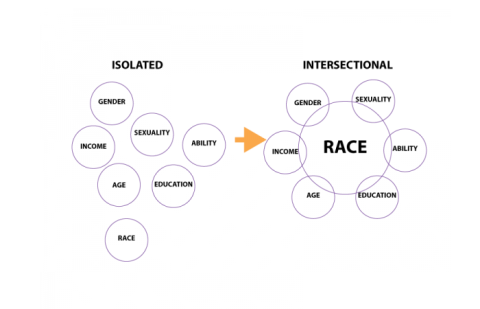We Lead With Race:
We lead with race with the recognition that the creation and perpetuation of racial inequities have been embedded into American culture and our government and that racial inequities across all indicators for success are deep and pervasive. We also know that other groups of people are still marginalized, based on gender, sexual orientation, ability, and age, to name but a few. Knowing this helps us take a more intersectional approach, while always naming the role that race plays in people's experiences and outcomes.
Focusing on racial equity provides the opportunity to introduce a framework, tools, and resources that can also be applied to other areas of marginalization. This prioritization is not based on the intent to create a ranking of oppression (i.e. a belief that racism is "worse" than other forms of oppression), but rather to create strategies that will positively impact all communities.
The Importance of Leading With Race:
- To have maximum impact, focus and specificity are necessary. Strategies to achieve racial equity differ from those to achieve equity in other areas. "One-size-fits all" strategies are rarely successful.
- A racial equity framework that is clear about the differences between individual, institutional and structural racism, as well as the history and current reality of inequities, has applications for other marginalized groups.
- Race can be an issue that keeps other marginalized communities from effectively coming together. An approach that recognizes the interconnected ways in which marginalization takes place will help to achieve greater unity across communities.
It is critical to address all areas of marginalization, and an institutional approach is necessary across the board. As local and regional government deepens its ability to eliminate racial inequity, it will be better equipped to transform systems and institutions impacting other marginalized groups.
